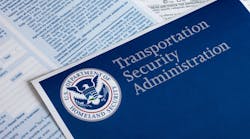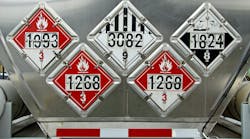The US Department of Transportation announced the passage of a new rule that will eliminate an estimated $1.7 billion paperwork burden from the trucking industry, while giving back 46.7 million hours to drivers--all without compromising safety. The rule, which goes into effect December 18, eliminates a burdensome daily paperwork requirement for professional truck drivers.
Current federal regulations require commercial truck drivers to conduct pre- and post-trip vehicle inspections and file Driver Vehicle Inspection Reports (DVIRs) after each inspection, regardless of whether an issue is identified or not. Significantly, the new rule removes the requirement for drivers to file a report when they don’t find any equipment problems or safety concerns. This single, small change eliminates about 95 percent of filed inspection reports, which state: “no issue found.”
“This is a big positive for the industry. Drivers are still required to perform high level inspections but not to tie up valuable limited hours filling out unnecessary reports,” said Mike Mencaroni, director of safety and loss prevention for Northeast and Canada at Ryder System Inc.
The Federal Motor Carrier Safety Administration (FMCSA) and Transportation Secretary Anthony Foxx proposed the new rule 15 months ago in response to President Barack Obama’s Regulatory Review and Reform Initiative from January 2011. According to Foxx, the new rule allows truck drivers to focus on getting their goods delivered instead of spending numerous hours on unnecessary paperwork.
DVIRs rank as the 19th highest paperwork burden based on the number of hours needed to comply with the regulation. With the new rule, the burden is reduced to 79th.
Under the new rule, drivers will continue to conduct pre- and post-trip inspections, but DVIRs will only be required if equipment defects or safety concerns are identified or reported to the driver during the day’s operations. Eliminating DVIRs when no defects or deficiencies are identified will give time back to the drivers, reduce their burden and improve efficiency.
“Vehicle Inspections are a critical part of keeping a vehicle moving down the road safely,” said Sanford J Hodes, senior vice-president and deputy general counsel at Ryder System Inc. “Liability, downtime, and being put out of service are only avoided by conducting quality vehicle inspections. And companies cannot afford to have vehicles out of service as a result of avoidable issues. This new rule doesn’t change the incentives for industry to conduct quality inspections or the accountability for the failure to do so. It simply releases industry from wasteful paperwork.”
The no-defect DVIR rule is scheduled to be published in the Federal Register, and go into effect on December 18. To read the new rule, click here: http://www.fmcsa.dot.gov/regulations/inspection-repair-and-maintenance-driver-vehicle-inspection-report-dvir









